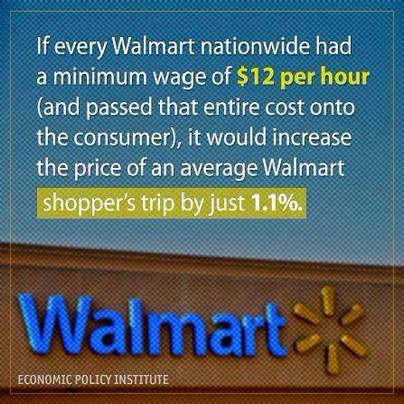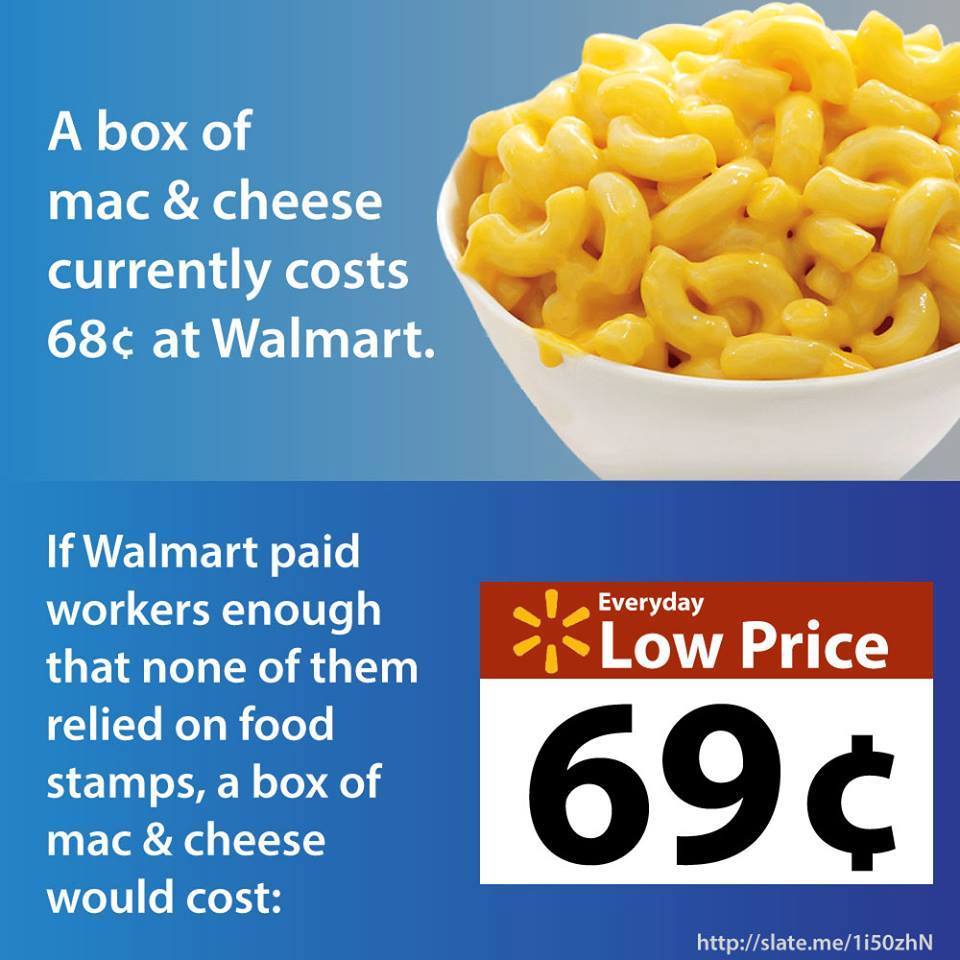Guess How Much Prices Would Go Up At Walmart If They Paid Their Workers A Living Wage?
By:
Today is Black Friday, and people have been lining up to participate in the great race for discounted products. And while these door-buster deals are unquestionably attractive for the average holiday shopper, it also makes you wonder: how much are low prices really costing us? Let's look at Walmart, where mass strikes among retail workers are planned next week.
In 2006, the theory that Walmart's low wages were necessary to sustain low prices was repudiated by the Economic Policy Institute. They found:
While still maintaining a profit margin almost 50% greater than Costco, a key competitor, Wal-Mart could have raised the wages and benefits of each of its non-supervisory employees in 2005 by more than $2,000 without raising prices a penny.

A UC Berkeley study has also corroborated that wage increases would have negligible effect on prices. Despite this data, Walmart's average hourly pay for cashiers has barely increased since 2003 - when it was $7.92, compared to $8.81 today.
Slate also recently published a video about the relationship between Walmart and the food stamp system, revealing just how little it would cost consumers for Walmart to pay its employees a living wage.
The video explains that, "Based on data from one state, Ohio, as many as 15% of Walmart employees use food stamps. That's about 40 employees per store who earn so little they qualify for food stamps."
And where do these food stamps ultimately end up? In the pockets of the Walmart corporation, it turns out. The company benefits from approximately $13 billion of taxpayer money (18% of the total government allotment for food stamps).
As the video illustrates, if Walmart raised its wages so that all of its employees were above the poverty line and no longer needed food stamps, they would only have to increase their prices by 1.4% to compensate for the losses. So basically, that 68-cent box of Mac & Cheese would now be 69 cents. Or, as the video aptly concludes, "That's one penny per box of Mac & Cheese to save U.S. taxpayers $300 million each year."

